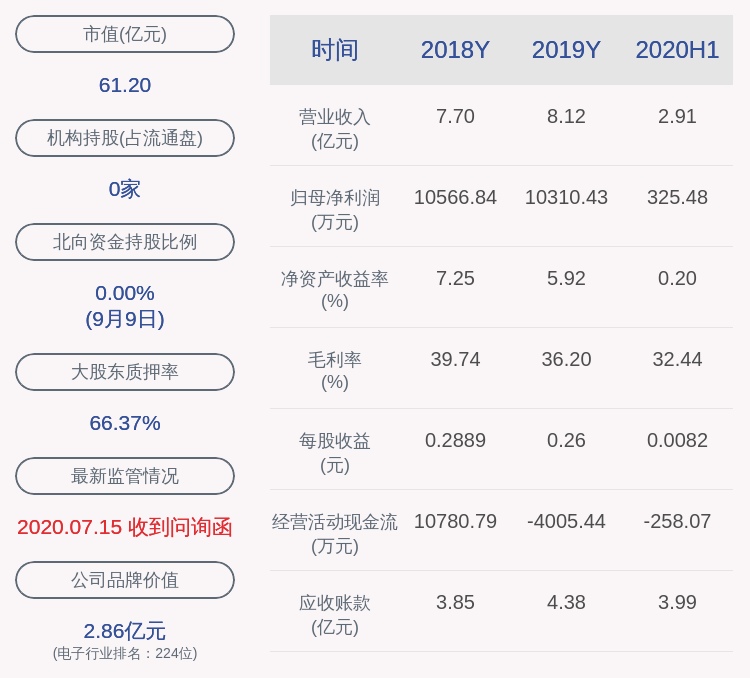2гҖҒиЎҢеҠЁеҶізӯ–жңәеҲ¶пјҡ
йҰ–е…ҲеңЁзЁӢеәҸжЎҶжһ¶дёӯи®ҫе®ҡдёҚеҗҢзҡ„иЎҢеҠЁдҪңдёәи®ӯз»ғеҜ№иұЎ
# иЎҢеҠЁpaddle_1(и®ӯз»ғеҜ№иұЎ)if action[0] == 1:self.paddle_1_speed = 0elif action[1] == 1:self.paddle_1_speed = -self.paddleSpeedelif action[2] == 1:self.paddle_1_speed = self.paddleSpeedself.paddle_1_pos = self.paddle_1_pos[0], max(min(self.paddle_1_speed + self.paddle_1_pos[1], 420), 10)жҺҘзқҖи®ҫзҪ®дёҖдёӘз®ҖеҚ•зҡ„еҲқе§ӢеҢ–еҶізӯ– гҖӮж №жҚ®з»“жһңеҲӨж–ӯеҘ–еҠұе’Ңжғ©зҪҡжңәеҲ¶пјҢеҚізҗғж’һеҲ°жӢҚдёҠеҘ–еҠұпјҢж’һеҲ°еўҷдёҠзӯүзӯүжғ©зҪҡпјҡ
е…¶дёӯд»Јз ҒеҰӮдёӢпјҡ
гҖҗPython иҝҳиғҪе®һзҺ°е“Әдәӣ AI жёёжҲҸпјҹйҷ„дёҠд»Јз ҒдёҖиө·жқҘдёҖжҠҠгҖ‘# иЎҢеҠЁpaddle_2(и®ҫзҪ®дёҖдёӘз®ҖеҚ•зҡ„з®—жі•дҪҝpaddle_2зҡ„иЎЁзҺ°иҫғдјҳ, йқһи®ӯз»ғеҜ№иұЎ)if self.ball_pos[0] >= 305.:if not self.paddle_2_pos[1] == self.ball_pos[1] + 7.5:if self.paddle_2_pos[1] < self.ball_pos[1] + 7.5:self.paddle_2_speed = self.paddleSpeedself.paddle_2_pos = self.paddle_2_pos[0], max(min(self.paddle_2_pos[1] + self.paddle_2_speed, 420), 10)if self.paddle_2_pos[1] > self.ball_pos[1] - 42.5:self.paddle_2_speed = -self.paddleSpeedself.paddle_2_pos = self.paddle_2_pos[0], max(min(self.paddle_2_pos[1] + self.paddle_2_speed, 420), 10)else:self.paddle_2_pos = self.paddle_2_pos[0], max(min(self.paddle_2_pos[1] + 7.5, 420), 10)# иЎҢеҠЁball# зҗғж’һжӢҚдёҠif self.ball_pos[0] <= self.paddle_1_pos[0] + 10.:if self.ball_pos[1] + 7.5 >= self.paddle_1_pos[1] and self.ball_pos[1] <= self.paddle_1_pos[1] + 42.5:self.ball_pos = 20., self.ball_pos[1]self.ballSpeed = -self.ballSpeed[0], self.ballSpeed[1]reward = self.hitRewardif self.ball_pos[0] + 15 >= self.paddle_2_pos[0]:if self.ball_pos[1] + 7.5 >= self.paddle_2_pos[1] and self.ball_pos[1] <= self.paddle_2_pos[1] + 42.5:self.ball_pos = 605., self.ball_pos[1]self.ballSpeed = -self.ballSpeed[0], self.ballSpeed[1]# жӢҚжңӘжҺҘеҲ°зҗғ(еҸҰеӨ–дёҖдёӘжӢҚеҫ—еҲҶ)if self.ball_pos[0] < 5.:self.paddle_2_score += 1reward = self.loseRewardself.__resetelif self.ball_pos[0] > 620.:self.paddle_1_score += 1reward = self.winRewardself.__reset# зҗғж’һеўҷдёҠif self.ball_pos[1] <= 10.:self.ballSpeed = self.ballSpeed[0], -self.ballSpeed[1]self.ball_pos = self.ball_pos[0], 10elif self.ball_pos[1] >= 455:self.ballSpeed = self.ballSpeed[0], -self.ballSpeed[1]self.ball_pos = self.ball_pos[0], 4553гҖҒDQNз®—жі•жҗӯе»әпјҡ
дёәдәҶж–№дҫҝж•ҙдҪ“з®—жі•зҡ„и°ғз”ЁпјҢжҲ‘们йҰ–е…Ҳе®ҡд№үзҘһз»ҸзҪ‘з»ңзҡ„еҮҪж•°пјҢеҢ…жӢ¬еҚ·з§ҜеұӮжҚҹеӨұзӯүеҮҪж•°е®ҡд№үе…·дҪ“еҰӮдёӢеҸҜи§Ғпјҡ
'''иҺ·еҫ—еҲқе§ӢеҢ–weightжқғйҮҚ'''def init_weight_variable(self, shape):return tf.Variable(tf.truncated_normal(shape, stddev=0.01))'''иҺ·еҫ—еҲқе§ӢеҢ–biasжқғйҮҚ'''def init_bias_variable(self, shape):return tf.Variable(tf.constant(0.01, shape=shape))'''еҚ·з§ҜеұӮ'''def conv2D(self, x, W, stride):return tf.nn.conv2d(x, W, strides=[1, stride, stride, 1], padding="SAME")'''жұ еҢ–еұӮ'''def maxpool(self, x):return tf.nn.max_pool(x, ksize=[1, 2, 2, 1], strides=[1, 2, 2, 1], padding='SAME')'''и®Ўз®—жҚҹеӨұ'''def compute_loss(self, q_values, action_now, target_q_values):tmp = tf.reduce_sum(tf.multiply(q_values, action_now), reduction_indices=1)loss = tf.reduce_mean(tf.square(target_q_values - tmp))return loss'''дёӢдёҖеё§'''def next_frame(self, action_now, scene_now, gameState):x_now, reward, terminal = gameState.update_frame(action_now)x_now = cv2.cvtColor(cv2.resize(x_now, (80, 80)), cv2.COLOR_BGR2GRAY)_, x_now = cv2.threshold(x_now, 127, 255, cv2.THRESH_BINARY)x_now = np.reshape(x_now, (80, 80, 1))scene_next = np.Append(x_now, scene_now[:, :, 0:3], axis=2)return scene_next, reward, terminal'''и®Ўз®—target_q_values'''def compute_target_q_values(self, reward_batch, q_values_batch, minibatch):target_q_values =for i in range(len(minibatch)):if minibatch[i][4]:target_q_values.append(reward_batch[i])else:target_q_values.append(reward_batch[i] + self.gamma * np.max(q_values_batch[i]))return target_q_values然еҗҺе®ҡд№үж•ҙдҪ“зҡ„зұ»еҸҳйҮҸDQNпјҢеҲҶеҲ«е®ҡд№үеҲқе§ӢеҢ–е’Ңи®ӯз»ғеҮҪж•°пјҢе…¶дёӯзҪ‘з»ңеұӮе“ӘйҮҢдё»иҰҒе°ұжҳҜзҘһз»ҸзҪ‘з»ңеұӮзҡ„и°ғз”Ё гҖӮ然еҗҺеңЁи®ӯз»ғеҮҪж•°йҮҢйқўи®°еҪ•еҪ“еүҚеҠЁдҪңе’Ңж•°жҚ®еҠ иҪҪе…ҘдјҳеҢ–еҷЁдёӯиҫҫеҲ°жЁЎеһӢи®ӯз»ғж•Ҳжһң гҖӮ
е…¶дёӯд»Јз ҒеҰӮдёӢпјҡ
def __init__(self, options):self.options = optionsself.num_action = options['num_action']self.lr = options['lr']self.modelDir = options['modelDir']self.init_prob = options['init_prob']self.end_prob = options['end_prob']self.OBSERVE = options['OBSERVE']self.EXPLORE = options['EXPLORE']self.action_interval = options['action_interval']self.REPLAY_MEMORY = options['REPLAY_MEMORY']self.gamma = options['gamma']self.batch_size = options['batch_size']self.save_interval = options['save_interval']self.logfile = options['logfile']self.is_train = options['is_train']'''и®ӯз»ғзҪ‘з»ң'''def train(self, session):x, q_values_ph = self.create_networkaction_now_ph = tf.placeholder('float', [None, self.num_action])target_q_values_ph = tf.placeholder('float', [None])# и®Ўз®—lossloss = self.compute_loss(q_values_ph, action_now_ph, target_q_values_ph)# дјҳеҢ–зӣ®ж ҮtrainStep = tf.train.AdamOptimizer(self.lr).minimize(loss)# жёёжҲҸgameState = PongGame# з”ЁдәҺи®°еҪ•ж•°жҚ®dataDeque = deque# еҪ“еүҚзҡ„еҠЁдҪңaction_now = np.zeros(self.num_action)action_now[0] = 1# еҲқе§ӢеҢ–жёёжҲҸзҠ¶жҖҒx_now, reward, terminal = gameState.update_frame(action_now)x_now = cv2.cvtColor(cv2.resize(x_now, (80, 80)), cv2.COLOR_BGR2GRAY)_, x_now = cv2.threshold(x_now, 127, 255, cv2.THRESH_BINARY)scene_now = np.stack((x_now, )*4, axis=2)# иҜ»еҸ–е’Ңдҝқеӯҳcheckpointsaver = tf.train.Saversession.run(tf.global_variables_initializer)checkpoint = tf.train.get_checkpoint_state(self.modelDir)if checkpoint and checkpoint.model_checkpoint_path:saver.restore(session, checkpoint.model_checkpoint_path)print('[INFO]: Load %s successfully...' % checkpoint.model_checkpoint_path)else:print('[INFO]: No weights found, start to train a new model...')prob = self.init_probnum_frame = 0logF = open(self.logfile, 'a')while True:q_values = q_values_ph.eval(feed_dict={x: [scene_now]})action_idx = get_action_idx(q_values=q_values,prob=prob,num_frame=num_frame,OBSERVE=self.OBSERVE,num_action=self.num_action)action_now = np.zeros(self.num_action)action_now[action_idx] = 1prob = down_prob(prob=prob,num_frame=num_frame,OBSERVE=self.OBSERVE,EXPLORE=self.EXPLORE,init_prob=self.init_prob,end_prob=self.end_prob)for _ in range(self.action_interval):scene_next, reward, terminal = self.next_frame(action_now=action_now,scene_now=scene_now, gameState=gameState)scene_now = scene_nextdataDeque.append((scene_now, action_now, reward, scene_next, terminal))if len(dataDeque) > self.REPLAY_MEMORY:dataDeque.popleftloss_now = Noneif (num_frame > self.OBSERVE):minibatch = random.sample(dataDeque, self.batch_size)scene_now_batch = [mb[0] for mb in minibatch]action_batch = [mb[1] for mb in minibatch]reward_batch = [mb[2] for mb in minibatch]scene_next_batch = [mb[3] for mb in minibatch]q_values_batch = q_values_ph.eval(feed_dict={x: scene_next_batch})target_q_values = self.compute_target_q_values(reward_batch, q_values_batch, minibatch)trainStep.run(feed_dict={target_q_values_ph: target_q_values,action_now_ph: action_batch,x: scene_now_batch})loss_now = session.run(loss, feed_dict={target_q_values_ph: target_q_values,action_now_ph: action_batch,x: scene_now_batch})num_frame += 1if num_frame % self.save_interval == 0:name = 'DQN_Pong'saver.save(session, os.path.join(self.modelDir, name), global_step=num_frame)log_content = '<Frame>: %s, <Prob>: %s, <Action>: %s, <Reward>: %s, <Q_max>: %s, <Loss>: %s' % (str(num_frame), str(prob), str(action_idx), str(reward), str(np.max(q_values)), str(loss_now))logF.write(log_content + 'n')print(log_content)logF.close'''еҲӣе»әзҪ‘з»ң'''def create_network(self):'''W_conv1 = self.init_weight_variable([9, 9, 4, 16])b_conv1 = self.init_bias_variable([16])W_conv2 = self.init_weight_variable([7, 7, 16, 32])b_conv2 = self.init_bias_variable([32])W_conv3 = self.init_weight_variable([5, 5, 32, 32])b_conv3 = self.init_bias_variable([32])W_conv4 = self.init_weight_variable([5, 5, 32, 64])b_conv4 = self.init_bias_variable([64])W_conv5 = self.init_weight_variable([3, 3, 64, 64])b_conv5 = self.init_bias_variable([64])'''W_conv1 = self.init_weight_variable([8, 8, 4, 32])b_conv1 = self.init_bias_variable([32])W_conv2 = self.init_weight_variable([4, 4, 32, 64])b_conv2 = self.init_bias_variable([64])W_conv3 = self.init_weight_variable([3, 3, 64, 64])b_conv3 = self.init_bias_variable([64])# 5 * 5 * 64 = 1600W_fc1 = self.init_weight_variable([1600, 512])b_fc1 = self.init_bias_variable([512])W_fc2 = self.init_weight_variable([512, self.num_action])b_fc2 = self.init_bias_variable([self.num_action])# input placeholderx = tf.placeholder('float', [None, 80, 80, 4])'''conv1 = tf.nn.relu(tf.layers.batch_normalization(self.conv2D(x, W_conv1, 4) + b_conv1, training=self.is_train, momentum=0.9))conv2 = tf.nn.relu(tf.layers.batch_normalization(self.conv2D(conv1, W_conv2, 2) + b_conv2, training=self.is_train, momentum=0.9))conv3 = tf.nn.relu(tf.layers.batch_normalization(self.conv2D(conv2, W_conv3, 2) + b_conv3, training=self.is_train, momentum=0.9))conv4 = tf.nn.relu(tf.layers.batch_normalization(self.conv2D(conv3, W_conv4, 1) + b_conv4, training=self.is_train, momentum=0.9))conv5 = tf.nn.relu(tf.layers.batch_normalization(self.conv2D(conv4, W_conv5, 1) + b_conv5, training=self.is_train, momentum=0.9))flatten = tf.reshape(conv5, [-1, 1600])'''conv1 = tf.nn.relu(self.conv2D(x, W_conv1, 4) + b_conv1)pool1 = self.maxpool(conv1)conv2 = tf.nn.relu(self.conv2D(pool1, W_conv2, 2) + b_conv2)conv3 = tf.nn.relu(self.conv2D(conv2, W_conv3, 1) + b_conv3)flatten = tf.reshape(conv3, [-1, 1600])fc1 = tf.nn.relu(tf.layers.batch_normalization(tf.matmul(flatten, W_fc1) + b_fc1, training=self.is_train, momentum=0.9))fc2 = tf.matmul(fc1, W_fc2) + b_fc2return x, fc2
жҺЁиҚҗйҳ…иҜ»
- Pythonз ҙи§ЈBiliBiliж»‘еқ—йӘҢиҜҒз ҒпјҢе®ҢзҫҺйҒҝејҖдәәжңәиҜҶеҲ«
- ж•°жҚ®жӣҙж–°еҲ йҷӨдёҺжҺ’еәҸпјҡжЁӘеҗ‘еҜ№жҜ” PythonгҖҒPowerBIгҖҒExcelгҖҒMySQL
- з”Ё Python и§Јжһҗе‘Ҫд»ӨиЎҢеҸӮж•°
- з”Ё Python з»ҳеҲ¶ж•°жҚ®зҡ„7з§ҚжңҖжөҒиЎҢзҡ„ж–№жі•
- еҰӮдҪ•зӣ‘и§ҶPythonзЁӢеәҸзҡ„еҶ…еӯҳдҪҝз”Ёжғ…еҶө
- иҢ¶еҸ¶еҸҳиҙЁиҝҳиғҪе–қеҗ—,й“Ғи§ӮйҹіиҝҮжңҹдәҶжІЎејҖе°ҒиҝҳиғҪе–қеҗ—
- й©ҫ驶иҜҒеҲ°жңҹдәҶжҖҺд№ҲеҠһпјҹиҝҳиғҪ继з»ӯејҖиҪҰеҗ—
- и§Ҷйў‘зӣҙж’ӯжңҚеҠЎжҗӯе»әеҘҪдәҶпјҹж•ҷдҪ еҝ«йҖҹе®һзҺ°еӨҡйў‘йҒ“иҫ“е…Ҙиҫ“еҮәдёҺжқғйҷҗжҺ§еҲ¶
- 5дёӘжЎҲдҫӢи®©Pythonиҫ“еҮәжјӮдә®зҡ„иЎЁж ј
- Python е‘Ҫд»ӨиЎҢд№Ӣж—…пјҡдҪҝз”Ё argparse е®һзҺ° git е‘Ҫд»Ө

















